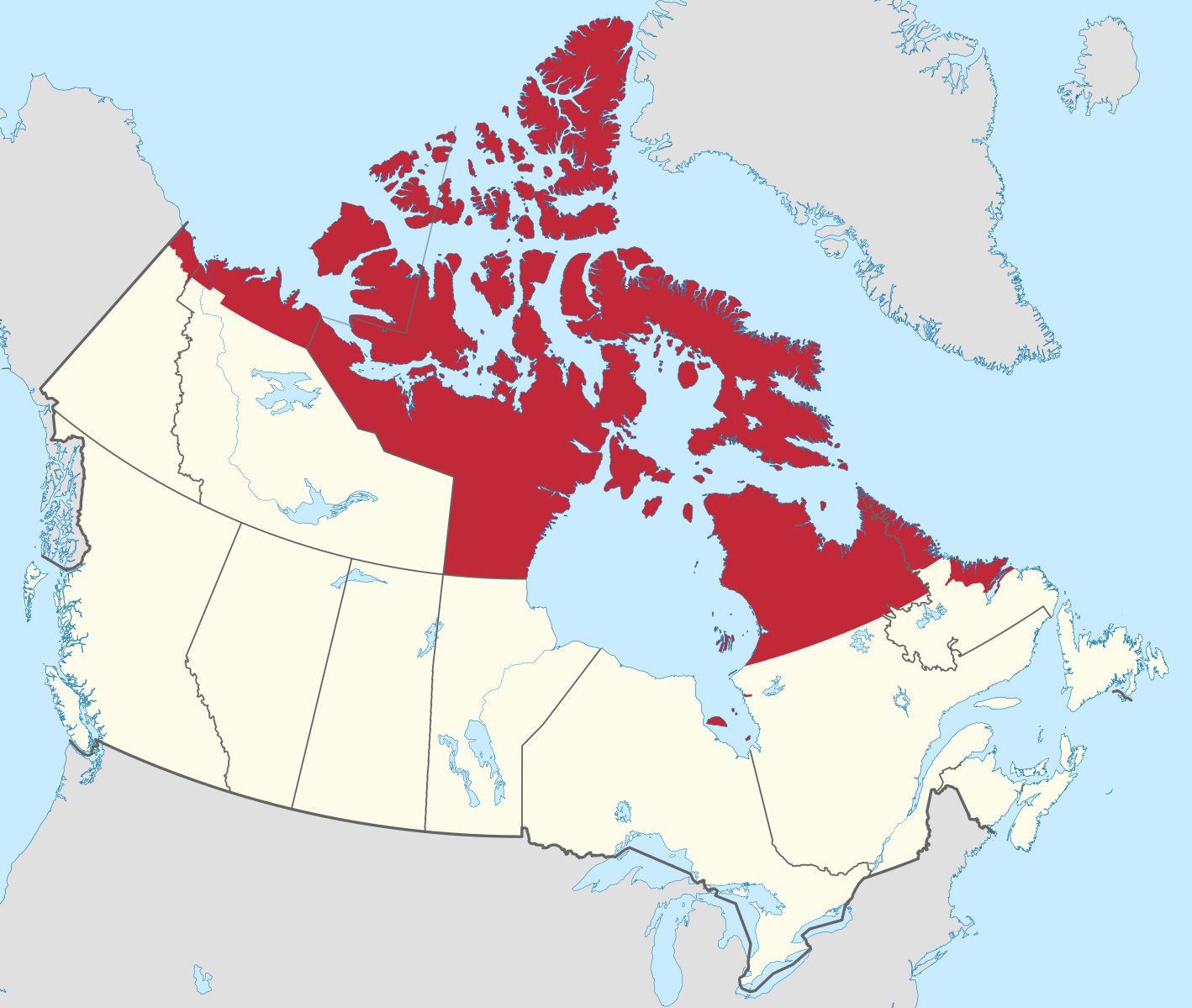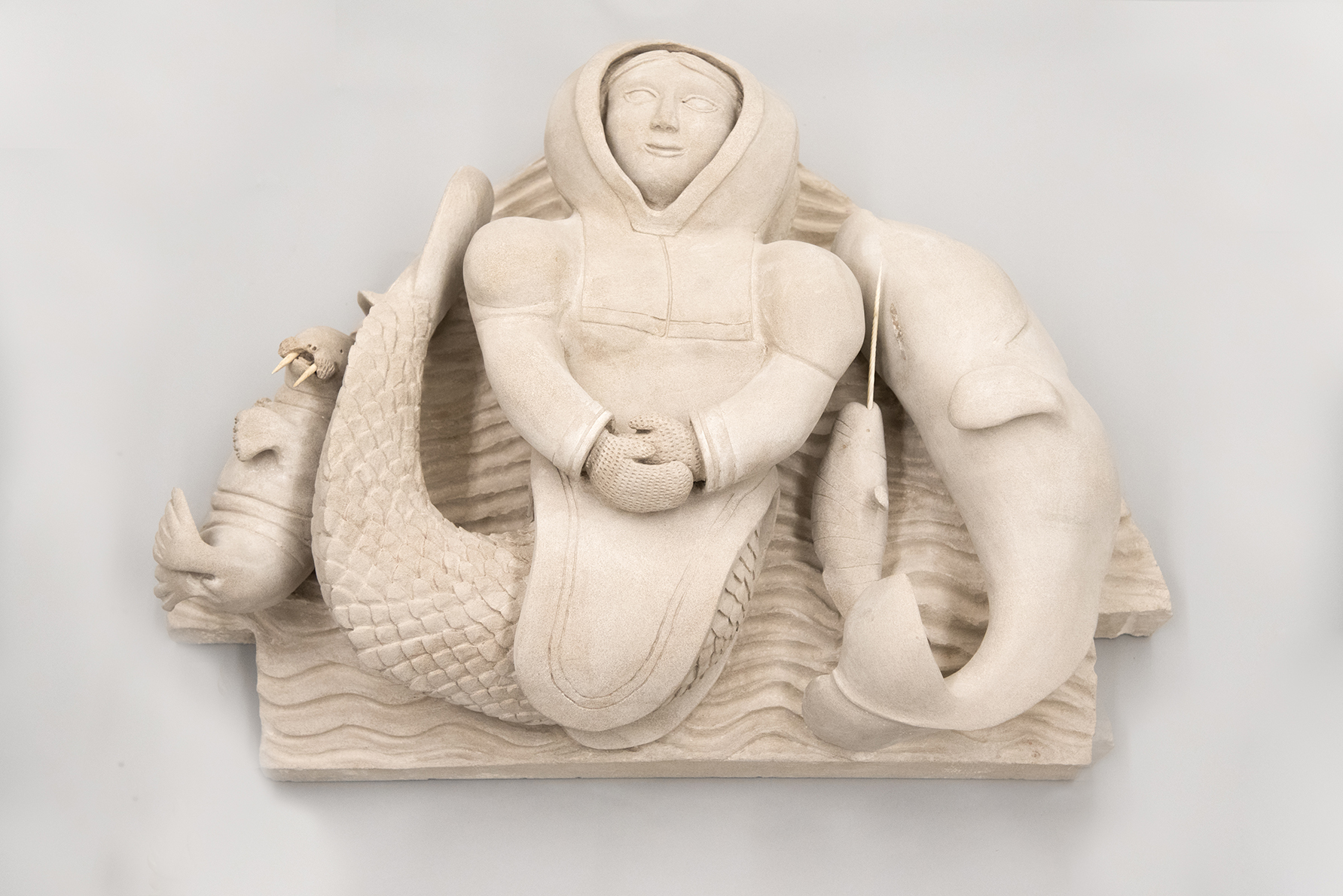
Overview of Sami Peoples
The Sámi people are a group of semi-nomadic reindeer-herding peoples indigenous to northern Scandanavia, spanning 4 different countries: Norway, Sweden, Finland, and the Kola Peninsula in north-western Russia. This region inhabited by the Sámi is called Sápmi.
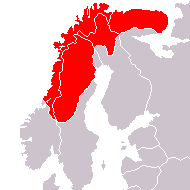
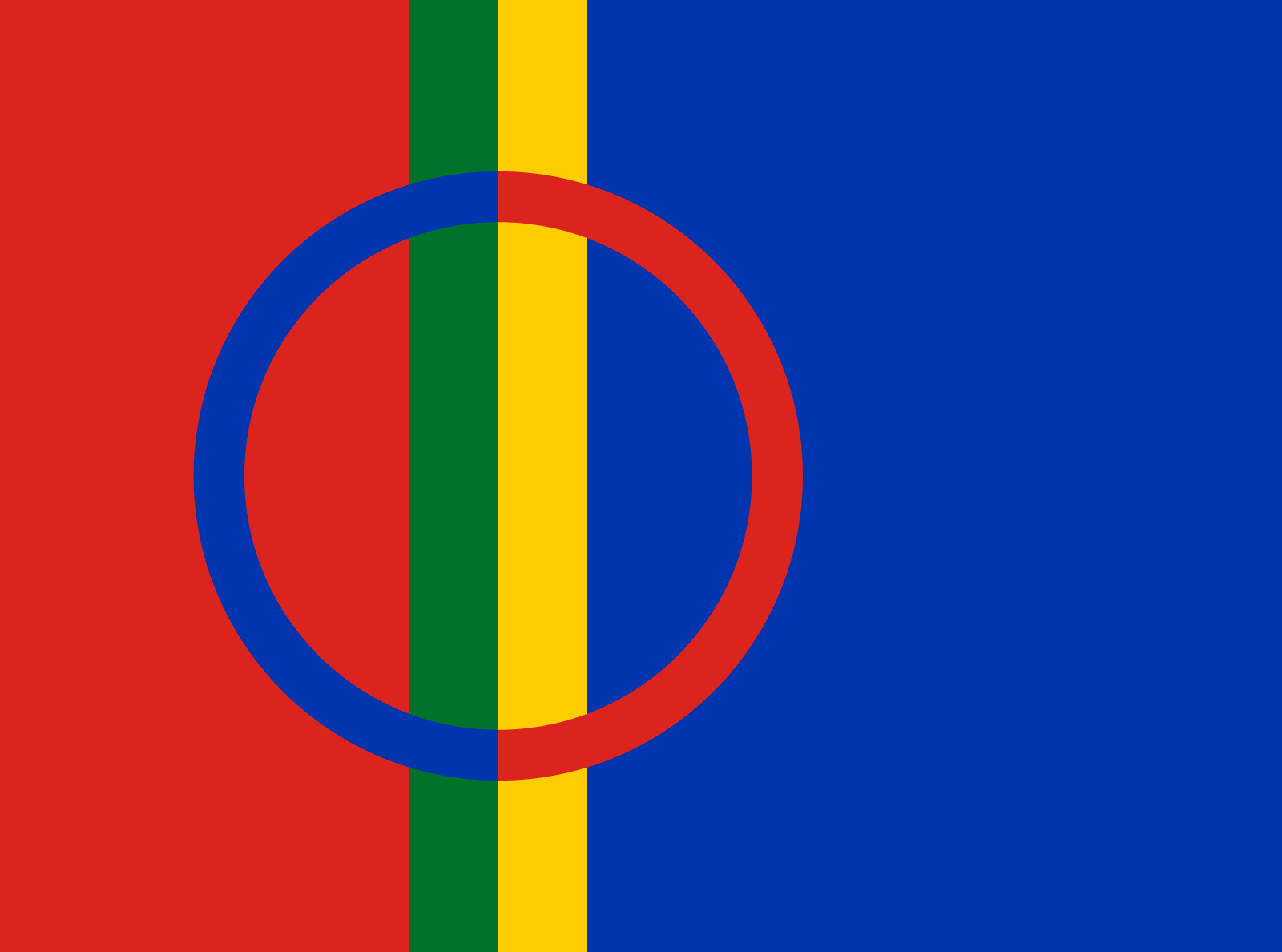
There are several distinct groups of Sámi, such as Northern Sámi, Lule Sámi, and Southern Sámi, for example. I'll be talking about them more broadly, rather than about any specific group.

Religion
General
Animismm as stated earlier, is a belief system that all beings have a spirit or soul, as well as consciousness, emotions, and goals (Helander-Renvall, 2008).
Due to prosecution and Christianization of the Sámi spanning possibly as far back as the 15th century, there is no truly "pure" form of Sámi shamanism that is unaffected by Christianity. However, that doesn't mean we have no information at all about pre-colonialist shamanism among the Sámi.
Afterlife
Each body had two spirits in them- a "free soul", which was able to travel to the afterlife, Saivo, on death, and a "physical soul", which stayed behind in the physical realm to either be malignant or benign, at the discresion of the soul. The free soul, as it is able to freely travel between Saivo and the physical realm, they acted as a sort of guide for Noaidi (spiritual leaders). (Tota, n.d).
Saivo or Álbimu is the name of the afterlife according to Sámi shamanist beliefs. This afterlife was basically a "hall of spiritual reunion", where the circle of life is completed by the re-integration of the spirit
Music
Joik is a soulful sort of singing, with traditionally little or no lyrics. They include chanting, as well as imitation of animal sounds, and this type of singing- in a shamanistic context- was used to achieve spiritual attunement. Joik melodies can also be used to describe people, places, and animals! It may describe a person's personality or appearance, animals such as wolves and reindeer, or places, such as features of the landscape, atmosphere, or certain events (TeachIK, n.d).
Drums had art on them that was personal to the person who owned it! There were especially important in that when played, they allowed Noaidi to do various things. This included communicating between their world and other world (such as Saivo), as well as projecting their spirit into another time and place. This offered deep emotional and spiritual insight into the world around them (Mollberg, 2003).
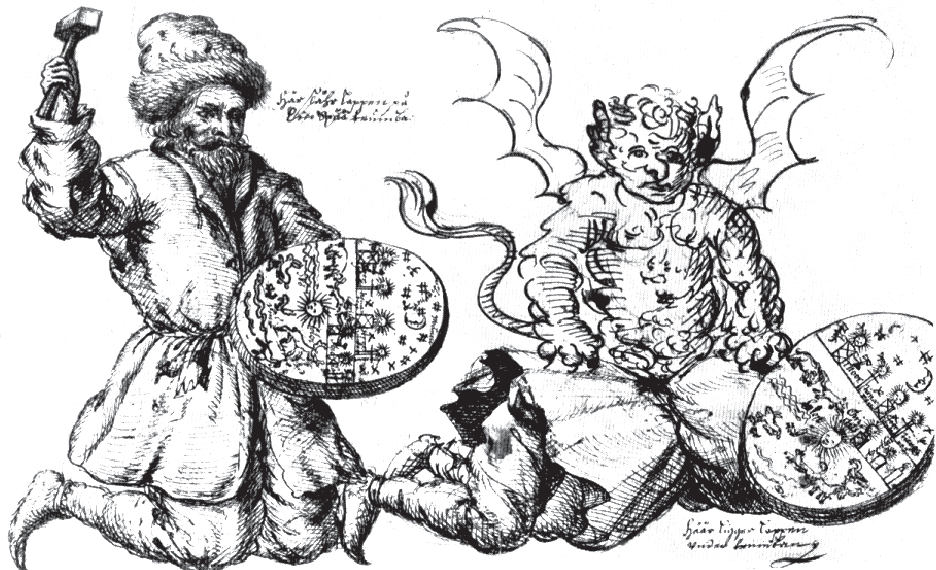
A Noaidi moving through different stages of consciousness, as he prepares for a spiritual journey.
Another source interprets this image as a depiction of a Noaidi consulting with the devil.
From Ernst Mankers: Die lappische Zaubertrommel. Eine ethnologische Monographie (1938)

Deities & Spirits
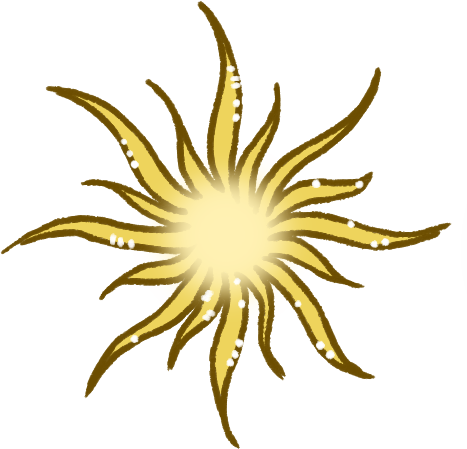 Beaivi
Beaivi
Beaivi, also known as Beiwe, is the Sámi Goddess of the sun, spring, and sanity. The sun is highly revered, especially in Sámi communities that live inside the Arctic circle, where sunlight is virtually non-existent during the winter months. Beaivi is also known as the goddess of sanity for this reason as well- it was believed that depression was caused by the lack of sunlight (basically seasonal depression), so prayers would be made for those struggling mentally (Mcgrath, 2015).
On the winter solstice, white female animals, typically reindeer, were sacrificed in her honour so make sure that she would rise again and put an end to the winter season. The meat from the sacrificed animal would be threaded onto sticks bent into circles, and tied up using white ribbon. There was also the tradition of smearing butter on the entrances of goahti (home) so that Beaivi could regain the strength to rise into the sky (Fairychamber, 2020).
Meandash
Rather than being a deity, Meandash is more of a mythical creature the bridges the gap between humans and reindeer. He is the child of a woman who is interpreted to be a witch in some versions, aptly named the Meandash-maiden. In the other version of the story, the Meandash-maiden was a young woman rather than possibly a witch. It's also pretty neat to note that the story of Meandash's birth and youth didn't take place in Sápmi, but instead in a mythical place that resembles the Kola Peninsula. This place is separated from Sápmi by a river of blood, called the Meandash-river (Ernits, 1999).
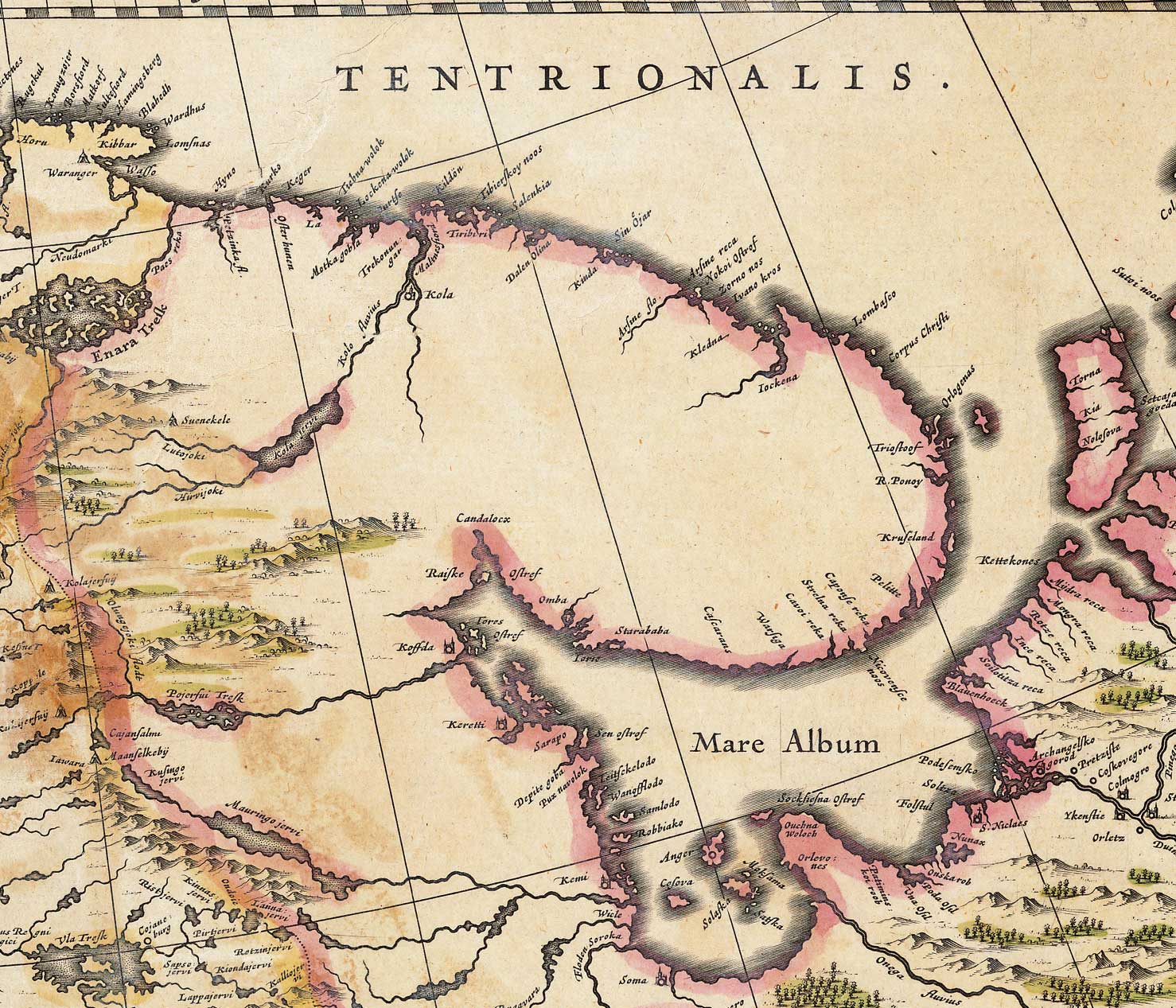
Map of the Kola Peninsula, from the Dutch Nova Atlas (1635), Willem Janszoon Blaeu.
Aside from that, Meandash represents the deep connection between the Sámi peoples and the reindeer they migrate alongside through a folk hero that is part reindeer, part human.

Christianization
There has been a centuries-old erasure of Sámi religion, culture, and language stemming from Christian colonialism as far back as the 17th century. Starting with a spike in puritanical witch trials waged by the Swedish Church, the Sámi have been dealing with the systematic oppression of many aspects of their life.
While one source says that the Sámi were prosecuted for witchcraft predominantly during the 17th century (Last, 2021), another source says that Sámi have been prosecuted as early as 1593, with 175 prosecutions spanning until 1695 (Emerson Jr, n.d). As the author notes, Sámi were willing to incorporate aspects of Christianity into their beliefs, however the church was not tolerant of differing beliefs, nor any form of Christianity that wasn't "pure".
There was a shift in how shamanistic leaders, Noaidi, were viewed. From being a spiritual guide, perception of them was transformed into worshippers of the devil, who had sold their own soul, as well as the souls of relatives, close family, and children. This belief held even into the 19th century.
There was also focus put into the demonization of Sámi instruments and practices that were directly associated with shamanism, such as drums and joik (Last, 2021). Emerson Jr. continues, talking about how a vast majority of drums were confiscated and burned, effectively destroying not only instruments that were a large part of shamanistic practices, but also actively erased artistic records of individuals, places, events, and animals that were important not only to Sámi as a whole, but also to indivifual families as well (Emerson Jr, n.d).

Attempts at Reconciliation
In 2021, the Church of Sweden apologised for past exploitation and persecution of Sámi peoples, aligning themselves towards reconciliation and incorporation of Sámi tradition into the Church. For example, Sámi minister Johan Märak introduced joiking to the church. His daughter, Nilla Märak states that his mere presence within the church intersecting with his Sámi identity could go a long way towards reconciliation (Last, 2021).
Meanwhile, there was zero presence from the Swedish government at the November 24th Church service in 2021. Rather, they were busy fighting reindeer herders in court, claiming the right to build mines and power plants on traditional Sámi lands, using statements from 1884 saying that Sámi herders live on a "less cultured level" and that they must "give way to more civilized people". Additionally, the Swedish government refused to ratify international conventions regarding Indigenous rights. (Last, 2021).
The Church of Sweden explicitly aligned themselves towards reconciliation with the Sámi, however with the Swedish government refusing to acknowledge its historical, centuries-long oppression of Sámi peoples, it is clear that there is still a long way to go for reconciliation in Sweden.
